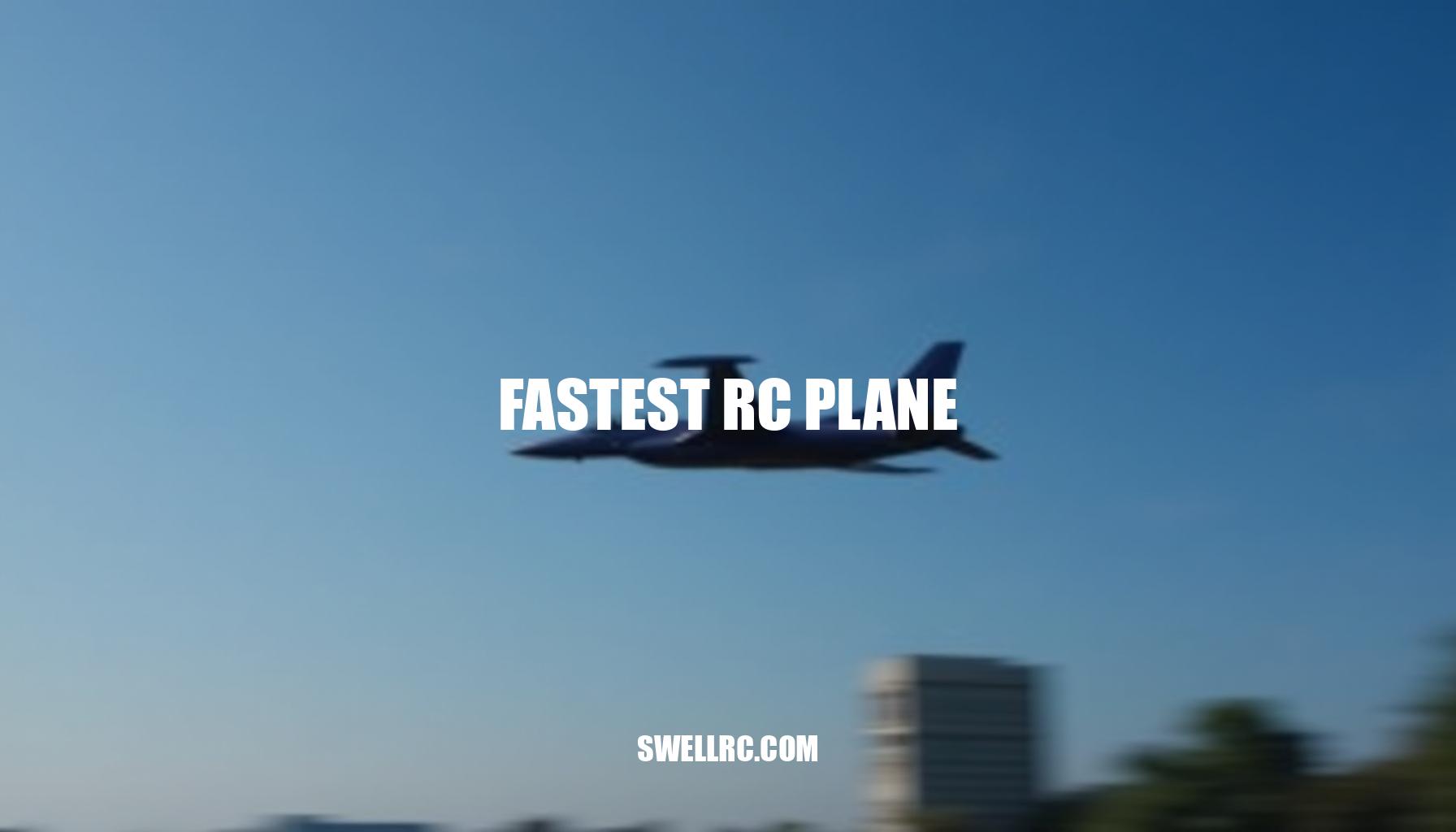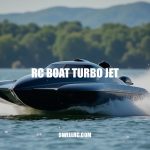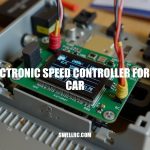The Fastest RC Plane Ever Recorded: Speed Secrets Revealed
The moment I watched a dynamic-soaring glider rip past at over 500 mph, I felt the same jolt I had the first time I pushed a trainer into a shallow dive—only amplified a hundredfold. That record run sent me down the rabbit hole of what truly makes the fastest RC plane fast: airframe purity, monster power systems, and pilots with ice-cold thumbs. Today’s speed scene spans everything from hand-launched gliders exploiting wind shear to turbine missiles and razor-thin electric racers.
Beginners feel the thrill at 60–80 mph; elite pilots chase 300+ mph in powered flight and 500+ mph in dynamic soaring. This guide blends what I’ve tested, timed, and broken with data from competition circuits and manufacturers to explore the keys to enhancing RC plane speed. The world’s best high performance RC aircraft combine aerodynamic refinement with cutting-edge propulsion to shatter boundaries, striving for the world’s fastest RC plane record 2024.
Whether you’re drawn to sleek turbine jets or nimble radio controlled speed planes, understanding what design decisions and component choices actually push an RC aircraft through the air faster than the rest is essential.
What Makes an RC Plane Fast: The Core Dynamics and Design Secrets
Speed in RC planes is critically influenced by aerodynamics and drag reduction techniques. A clean, slender fuselage combined with a thin, low-drag airfoil significantly minimizes parasitic and profile drag, while a small frontal area and tight gear doors keep airflow attached smoothly. Stiffness is equally important; using carbon skins, spars, and precise linkages helps prevent flutter, allowing you to hold more throttle in turbulent conditions.
Weight management plays a key role, striking a balance between being light enough to reduce induced drag and heavy enough to carry the necessary power and maintain stability at high speeds. Ultimately, the power-to-weight ratio serves as a straightforward benchmark: more thrust per gram typically translates to higher mph, assuming the airframe is capable of handling the stress.
Key factors to consider include:
- Aerodynamics: Minimize drag through smooth surfaces, sealed hinge gaps, and aligned thrust vectors, while selecting an airfoil optimized for high Reynolds numbers to enhance efficient airflow.
- Materials: Employ carbon fiber, fiberglass, and strategically placed balsa or foam cores to achieve optimal stiffness-to-weight ratios.
- Power systems: Choose propeller setups for efficiency, EDF RC plane configurations for jet-like speed despite some intake and duct losses, or turbines commonly found in turbine RC aircraft that provide sustained high thrust and realism.
- Cooling and ducting: Implement only necessary cooling to avoid excess drag caused by additional openings.
- Control integrity: Maintain tight linkages and flutter-resistant control surfaces to unlock higher top-end speeds.
If you’re seeking the purest speed-per-dollar performance in competition models, studying the line and setups of a dedicated pylon racer RC plane is invaluable. Understanding how RC plane aerodynamics affect speed can drastically improve your aircraft’s performance and competitive edge.
The Fastest RC Plane Models in the World (2024 Edition)
When discussing the world’s fastest RC plane record 2024, the top-speed royalty is found in just a few elite kingdoms of flight. Dynamic-soaring (DS) gliders claim the absolute speed crown, with multiple documented flights exceeding 500 mph using mountain wind shear—no prop, no turbine, just physics and expert maneuvering. In contrast, turbine RC aircraft push impressive boundaries in powered flight, commonly clocking 200–300+ mph, with some elite custom projects hitting even higher speeds under tightly controlled conditions.
The EDF RC plane category shines in the 160–230+ mph range, leveraging efficient inlets, high-capacity power packs, and ultra-clean aerodynamic builds. Meanwhile, pylon racing electric scale racers, such as F5D and Q40 classes, typically perform between 180 and 220 mph during competitions. At the more accessible end of the spectrum, hotliners and sleek sport jets—known for their agility and speed—crack the 120–180 mph mark with smart component choices and optimized setups.
Here’s a speed snapshot for benchmarking the fastest RC jet and other high performance RC aircraft:
| Category | Speed Range (mph) | Notes |
|---|---|---|
| Dynamic-Soaring Gliders (DS) | 500+ mph | Ideal mountain wind shear, expert-only domain |
| Turbine RC Aircraft | 200–300+ mph | Elite custom builds may exceed this under controlled conditions |
| EDF RC Plane | 160–230+ mph | Efficient inlets, strong batteries, clean builds |
| Electric Pylon Racing (F5D/Q40) | 180–220 mph | Competition-optimized scale jets |
| Hotliners / Slope Speedsters | 140–200 mph | Varies by setup and air conditions |
For enthusiasts aiming to build or upgrade the world’s fastest RC jet or any other high performance RC aircraft, premium kits and components are crucial. I often browse Esprit RC planes for their composite airframes and high-quality hardware selection, which greatly simplify achieving the speed targets you’re chasing.
How to Build or Modify Your Own Speed-Focused RC Plane
Most of the mph I’ve “found” came from cleanliness and stiffness, not just bigger motors. To truly master how to make a fast RC plane, start with a straight, rigid airframe and incorporate the best materials for speed RC aircraft. This includes composite skins, carbon spars, and rigid tails that ensure optimal structural stiffness.
Additionally, seal all hinge gaps and fair every protrusion by countersinking screws and polishing leading edges to reduce drag. When selecting your powertrain, match the motor Kv and voltage to the propeller pitch speed appropriate for your target airspeed. For EDF setups, focus on optimizing the EDF inlet design — specifically the inlet lip radius and tail cone shape — to maximize efficiency.
Turbines demand a straight thrust line and robust mounts for safety and performance.
- Airframe: composite skins, carbon spars, rigid tails; seal hinge gaps; sand and polish leading edges.
- Power: match Kv and voltage to prop pitch speed; for EDF, optimize inlet lip radius and tail cone; for turbines, ensure straight thrust line and robust mounts.
- Electronics: quality ESC with adequate headroom and cooling, tuned ESC timing, low-ESR capacitors, and minimal connector count.
- Battery: high-C, low-IR packs; keep leads short; verify voltage sag under full load.
- Props/Fans: balance dynamically; choose pitch for target airspeed; keep tip Mach below compressibility trouble.
- Control: stiff pushrods, metal gear servos, high frame-rate signal; flutter inspection after each high-speed run.
- Structural safety: inspect for delamination, soft spots, or play; retire parts that have seen over-stress.
Implementing these lightweight techniques transfers well to speed-focused builds; every gram saved can be reallocated to watts or increased stiffness, amplifying your aircraft’s speed and responsiveness. For more detailed guidance, check out these how-to ideas on making super light RC indoor planes, which dovetail perfectly with high-speed optimization strategies.
Speed Comparisons: Where RC Planes Stand Against Other RC Vehicles
When comparing RC plane speed to that of the fastest RC car comparison, airplanes consistently outpace their ground-bound counterparts due to superior energy efficiency and reduced aerodynamic drag. The aerodynamic advantage of lift-supported flight allows FPV RC planes to achieve much higher velocities, often tripling the top speeds of high-end RC cars while maintaining stability during long passes overhead. Here’s a side-by-side comparison that highlights how fast can an RC plane go versus the top speeds of RC cars:
| Category | Speed Range (mph) | Notes |
|---|---|---|
| Top RC Planes | 150–300+ | Well-sorted powered builds; DS records exceed 500 mph |
| Top RC Cars | 150–200+ | Extraordinary projects, battling traction, terrain bumps, and aero drag |
Measurement techniques such as radar guns, onboard GPS, and Doppler radar each tell a slightly different story.
To understand the nuances of RC plane speed verification, check out our detailed guide here: how we define and verify RC plane speed. For a closer look at the fastest RC car, visit what the fastest RC car looks like in detail. Ultimately, wing-borne efficiency decisively wins the mph arms race, especially as speeds climb into the higher ranges.
Beyond the Numbers: Performance, Precision, and Passion
Chasing speed in the world of RC planes is as much about the feeling it evokes as the raw numbers on the speedometer. The thrill of that first clean, wind-up pass on a fresh setup invites every pilot to breathe with the throttle—easing on power, locking the line, and attuning ears for any hint of flutter. Interestingly, not every enthusiast needs to reach 200 mph to experience this rush.
Thanks to advancements in sub-250g RC planes, the entry barrier has almost vanished. These featherweight rockets remain simple and affordable, making high-adrenaline flight accessible to newcomers and veterans alike.
Explore how these nimble aircraft are transforming the flying scene by enabling precision and exhilaration without the massive commitment: Sub-250g RC Planes.
At the other end of the spectrum, honing pilot skill through precision flying indoors with F3P RC planes helps keep reflexes razor-sharp. The discipline gained in tight, controlled environments naturally translates to smoother, more refined high-speed lines outdoors. Curious about where to begin with indoor aerobatics and control?
This is the perfect starting point: F3P RC Planes.
For pilots who savor style along with speed and control, modern scale jets offer unmatched RC jet aesthetics. Few profiles turn heads like an RC F-35 executing a breathtaking low pass. These scale models don’t just fly; they command attention and celebrate the art of silhouette flying.
Discover the allure and detailed craftsmanship behind these jets: RC F-35.
Whether your passion lies in mastering FPV RC planes to navigate immersive, fast-paced environments or perfecting the art of control with featherweight flyers and scale jets, remember this mantra: speed, control, and style—pick any two, then spend your season earning the third.
Choosing the Right Speed Plane for You
When selecting an airframe, it’s essential to match it to your skill level and available flying space, then layer on the appropriate power system. Beginners should opt for stable platforms with moderate wing loading and speed ranges between 60–100 mph for forgiving handling. Intermediate pilots can handle cleaner airframes and increased wing loading, typically flying at speeds from 120–180 mph.
Advanced flyers targeting speeds of 180–250+ mph require composite builds, precise linkage tolerances, and diligent maintenance to ensure optimal performance. For those seeking a friendly first step and flying in tiny fields, considering a best mini RC plane is often recommended—check current favorites in this buyer’s guide RC plane here.
| Skill Level | Recommended Airframes | Speed Ranges (mph) | Power Systems | Key Features |
|---|---|---|---|---|
| Beginner | Park flyer trainers, minis | 40–90 | 3S–4S electric | Forgiving handling, stable platforms |
| Intermediate | Sport EDFs, hotliners | 100–160 | 4S–6S electric | Moderate wing loading, good thermal management |
| Advanced | Pylon racers, sleek EDFs | 160–230 | 6S–12S electric | Composite airframes, precise setups |
| Expert | Turbines, DS gliders | 220–400+ powered, 500+ DS | Turbine RC aircraft | Strict safety discipline, specialized sites |
By understanding these speed ranges and corresponding skill levels, you can confidently choose an electric RC plane or turbine RC aircraft suited to your abilities. This ensures your flying experience is both enjoyable and safe, paving the way for advancing through the tiers as you gain confidence and expertise.
Conclusion: The Endless Quest for Faster Flight
If there’s one thing my testing consistently reveals, it’s this: the fastest RC planes share a formula rooted in precision and efficiency. From the powerful DS monsters carving through 500 mph loops to sleek turbine jets blazing runway passes at 300+ mph, the high performance RC aircraft lineup proves that success depends on being brutally clean aerodynamically, structurally rigid, and powered just enough to overcome the final knots of drag. This RC plane speed insights emphasize that aerodynamic optimization isn’t about brute force alone but engineering finesse.
My deep dive into these machines highlighted how subtle improvements contribute to massive gains.
Consider the benefits of:
- Sealed hinges that reduce airflow disruption,
- Straighter ducts improving thrust efficiency,
- Stiffer tails enhancing control precision,
- Better-balanced props increasing power utilization.
As materials, batteries, and electronics continue to evolve with every season, the future of RC speed looks ever more exciting. These incremental refinements not only boost velocity but also optimize control and reliability, ensuring that the pursuit of new records is a thrilling journey grounded in technical mastery.
Frequently Asked Questions
- What is the fastest RC plane ever recorded?
The absolute top speeds belong to dynamic-soaring (DS) gliders, which use mountain wind shear to exceed 500 mph (800+ km/h). Widely cited flights by Spencer Lisenby have surpassed 540–548 mph, and as of 2024 DS still holds the overall RC speed crown. - How do RC planes reach such high speeds?
They maximize thrust-to-drag and keep control surfaces stable at high dynamic pressure. Clean aerodynamics, stiff composite structures, optimized props/fans, and precise balance let pilots hold full power without flutter. DS gliders do it differently—by repeatedly crossing wind shear layers to harvest energy without a motor. - What factors affect the speed of an RC plane?
Drag (frontal area, surface roughness, cooling openings), wing loading, power-to-weight ratio, prop or fan efficiency, air density/temperature, control linkage stiffness, and exact trim (CG and thrust line). All must be aligned for a stable, high-speed pass. - Can I build my own high-speed RC plane at home?
Yes—hitting 120–160 mph is very achievable with today’s components and a careful build. Pushing past ~200 mph demands composite airframes, perfect linkages, balanced props/fans, and rigorous testing. Start conservative, validate temperatures and current, and step up power gradually. - Are electric RC planes faster than fuel-powered ones?
It depends on the class. Electric pylon racers and EDFs dominate 150–230+ mph with simplicity and instant torque. Turbine jets often lead sustained straight-line top speed in powered flight, while the overall absolute record belongs to unpowered DS gliders. - What upgrades make an RC plane fly faster?
Reduce drag (seal hinge gaps, streamline protrusions), increase usable power (higher-voltage motor/ESC combo, high-C batteries), optimize prop pitch or EDF unit, stiffen control surfaces, improve cooling with minimal openings, and ensure perfect balance and alignment. - Are sub-250g RC planes capable of high speed?
Surprisingly, yes—many crack 60–100 mph and feel very fast due to their size. They’re limited by battery mass and disk loading, but they’re fantastic for honing reflexes and flying in small spaces. - How dangerous can fast RC planes be?
Very. Kinetic energy rises with the square of speed, so even small errors can have serious consequences. Fly at designated fields, establish a safe flight line, perform meticulous preflight checks, use failsafes, and never fly over people or property.



